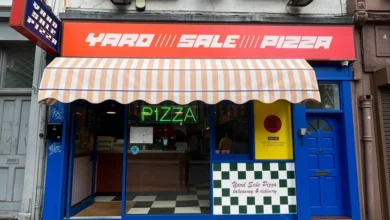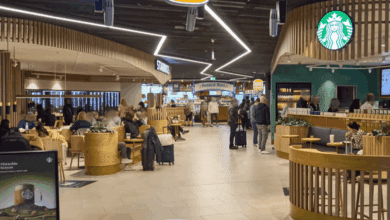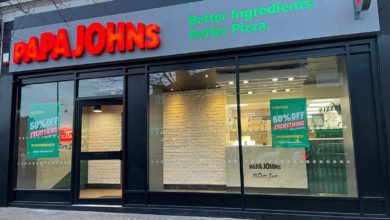Why have London’s restaurants continued to become more expensive?
Peter Harden, editor and co-founder of Harden’s London Restaurants 2024 guide, talks to Catering Today about the reasons behind the increase in restaurant prices, whether the quality has increased and why the number of openings across the country is stagnant

Register to get 1 free article
Reveal the article below by registering for our email newsletter.
Want unlimited access? View Plans
Already have an account? Sign in
Data from Harden’s London Restaurants 2024 guide found that the number of restaurants in London charging £150 per head or more per person for a meal has risen 46% to 54 up from 37 last year. The data also found that there has also been a 59% jump in the number of London restaurants charging over £200 per head from 17 last year to 27 this year.
Alongside this the number of openings in London and beyond has stagnated with only 123 new openings in Harden’s 2024 guide, the lowest level of openings since its 2012 edition. This compares to the growth rate of the 1990s.
Why have prices gone up?
The reasons why more restaurants have increased what they charge per head is a fairly common issue in all industries these days. As Peter Harden, co-founder and editor of the guide, explains, restaurants in the UK are struggling with rising supply costs and inflation.
Inflation is also causing increased salary costs and is causing a number of restaurants to rethink their menus and offer customers something that costs a bit less to produce but still gives them at least some luxury.
“A combination of rising costs from the growth in inflation and associated salary costs; and also perhaps a slight softening of custom with the cost of living crisis leading to an attempt to make those customers who come more profitable, rather than relying on a ‘pile it high sell it cheap’ strategy. The rise of the tasting menu in luxury restaurants is a case-in-point, ensuring that a customer must be locked into eating to the full and drinking to the full in a given service,” Harden says.
The cost of living and inflation are not the only reasons behind it however. Some of the increases are a hangover from the pandemic which forced a number of restaurants to close, decreasing competition, and those that survived had to adapt to do so. Brexit has also caused issues with supply chains but mostly in staffing. There are now less people in the UK willing to wait tables and do other service jobs.
However, Harden believes that the adaptation forced by the pandemic and spiralling costs is the reason behind the increase. This adaptation is specifically restaurant owners discovering that tasting menus are a much more profitable strategy. Restaurants can now serve more courses but smaller portions which use less ingredients which massively increases profit margins.
There are also questions over how many of the restaurants that have increased their prices over £100 and £150 per head have actually increased the quality of their food and their service to go along with the increase. Harden states that while it is hard to quantify, the most likely answer is “probably not”.
“It is almost impossible to make proper year-on-year comparisons with restaurants because ultimately what’s on the plate is so variable that proper measurement is unrealistic. You might have a dish that’s called the same, priced the same, but with half the number of scallops / half the weight of meat or whatever actually served,” Harden explains.
Overall, Harden does not see this as a positive thing for the restaurant scene in London. In his view price increases only benefit a scene when they come with an increase in quality which importantly must be supported by a demand, of which there is very little.
However, he does state that this may present opportunities for high end restaurants who want to try to appeal to a more budget audience and points to the lunch menu that Jason Atherton offers at his venues.
A lack of openings
With the lack of openings, Harden explains that this is not a new trend. According to him this has been an ongoing theme since 2018. A lack of confidence from chefs to take the risk and a lack of confidence from investors coupled with less access to cheap property and favourable deals from developers has exacerbated the stagnation.
This has obviously not been helped by the pandemic which caused a number of closures as has the recent cost of living and inflation crises. Inflation has also increased the cost of borrowing massively which will not have helped chef or investor confidence.
The research from Harden found that “Modern British” cuisine was the most popular among new openings perhaps emphasising the lack of confidence in new openings as those who are able to scramble the cash together are playing it safe with their offering.
Harden explains that Modern British cuisine can be defined as the default cuisine for any chef and its popularity comes from its familiarity to customers but also the ease at which restaurant owners are able to source the ingredients locally which decreases supply chain pressure.
Will this last?
How likely are both of these trends to continue? For Harden he believes that the very top end of pricing, over £250 per head, may have topped out and that further price increases are unlikely to be seen. Furthermore, with demand softening Harden believes that this may force restaurants to lower their prices to sustain themselves.
On the trend of openings Harden sees it both ways. He believes that the aforementioned issues will continue and this will obviously decrease the ability for people to open new food venues. Conversely, he does believe that confidence in the restaurant industry, certainly at the higher price points, is returning in London, especially as people return to the office and this is increasing investor confidence.
“The long term factors constraining growth remain but I think confidence post-Covid is continuing to return as are office workers to London and cities generally and that people are maybe therefore more ready to invest,” says Harden.







